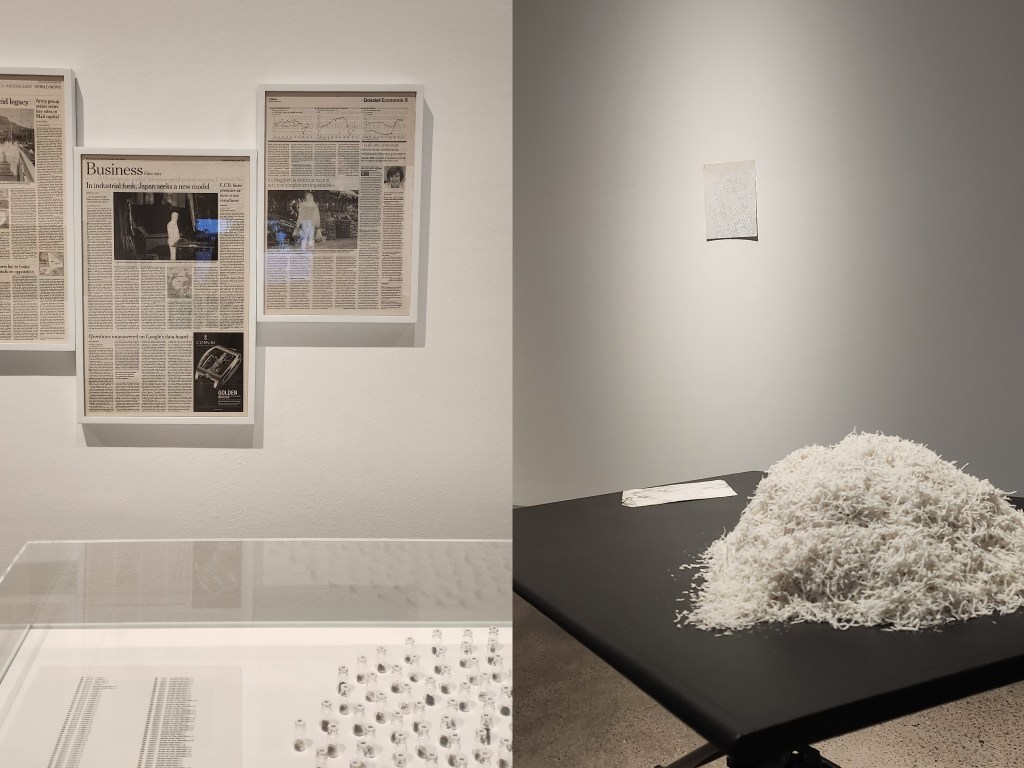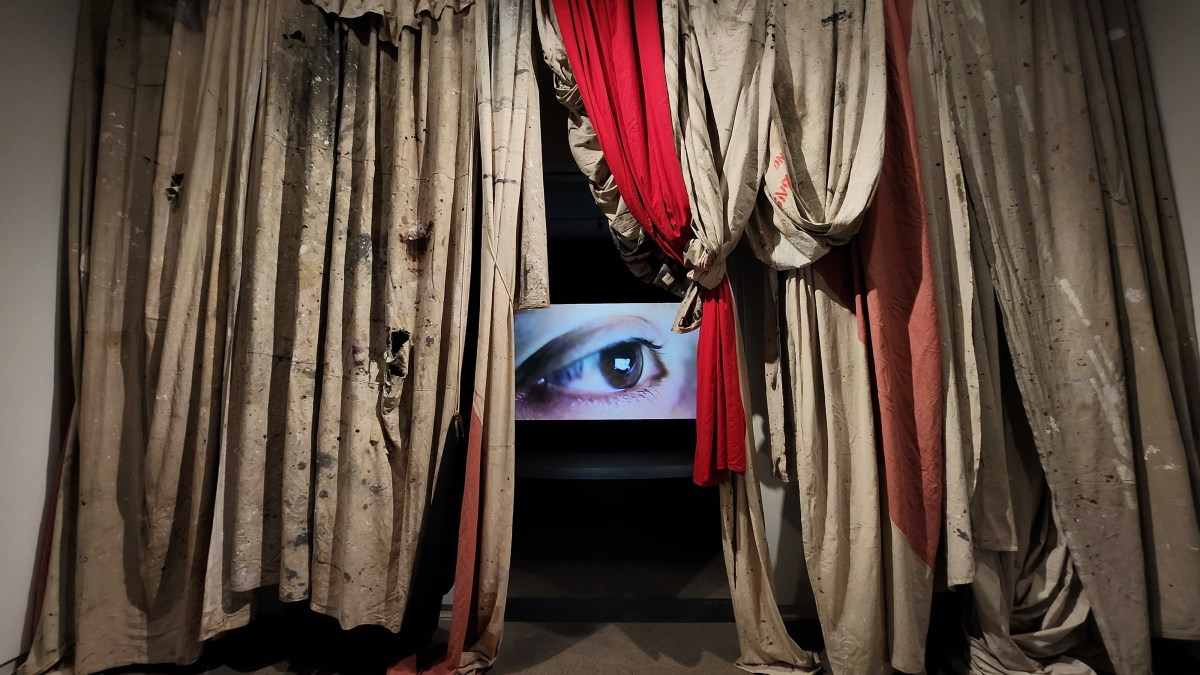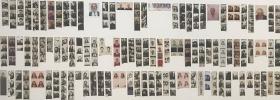Bringing together the works of 20 Latin American and Australian artists in dialogue, Beneath the Surface, Behind the Scenes at Heide Museum of Modern Art is an exhibition that is both contextually and spatially aware.
Movement, erasure, material, identity and power are just some of the core themes open for investigation. As the title suggest, visitors are invited to a kind of revelation by the unveiling of the lesser seen and known – for better or for worse.
Spatially, pieces such as Arturo Hernández Alcázar’s Empty Structure/Cancelled Architecture 1 (2013) and Lauren Brincat’s Backstage (2022-ongoing) challenge the “polished product” of an exhibition. Representing a storage room accident frozen in time, Alcázar‘s work purposefully carves out the institutional architecture to make space for chance and chaos. Meanwhile, Backstage takes drop sheets previously used by artists and arts workers for exhibitions and reconstructs them as the artwork – a metaphorical and physical gateway for viewers to reconsider the temporalities and labour of exhibition-making.
In Beneath the Surface, Behind the Scenes, there are also artists who perform acts of erasure to generate visibility. Take the work of Ecuadorian artist Estefanía Peñafiel Loaiza. In Figurantes (Extras) (2009-14), 20 newspaper clippings show anonymous everyday figures erased from the headline photos, those who happened to have been captured, but are ultimately irrelevant to the story. The residue – blackened crumbs of the erasers – is collected and archived in glass vials, an exercise that restores some level of care and significance to the otherwise meaningless figures.
WA-born Melbourne-based artist Christian Capurro’s Young Man Against the White Curtain (2011) uses a similar technique of erasure to deconstruct images and question the relationship between material connection and immaterial labour. The two works together also speak to how similar processes can evoke different interpretations, and shed certain light on the the interconnectedness of contemporary practices.

Vision itself is challenged in Loaiza’s video installation, Visibility is a Pitfall (2009) and Marlon de Azambuja’s Water Towers (2015), both evoking tension between the desire to know and who can access certain knowledge.
There are instances throughout the show where works take on an almost surrealist aesthetic, such as Loaiza and Alexis Moreano Banda’s video of spliced up vintage porn Gorgô (Gorgo) (2021) and, sneakily positioned diagonally above the entrance way, Liliana Porter’s Untitled (line II) (2012). On the flip side are heavier moments, including Berna Reale’s Palomo (2012), a recorded public demonstration where the artist embodies an authoritative figure, and Lines of Divergence (2018) by Ximena Garrido-Lecca, which examines the history of land possession and resource exploitation in Peru.
Read: Exhibition review: Toys, Tales and Tenacity, Shrine of Remembrance
While Heide has always positioned itself at the forefront of contemporary practice and championed the legacy of the Reeds, there are aspects of Beneath the Surface, Behind the Scenes that feel experimental and bold for the Museum. It has lunged into a field of socially and politically engaged art, and presented itself as a hub for critical discourse. This broadened scope of contextual underpinning is handled with grace by Senior Curator Melissa Keys.
Beneath the Surface, Behind the Scenes is densely packed with nodes of interconnection and interrogation across cultures, geographies and temporalities.
Beneath the Surface, Behind the Scenes is on view at Heide Museum of Modern Art from 29 July to 22 October; tickets $17-$22.





